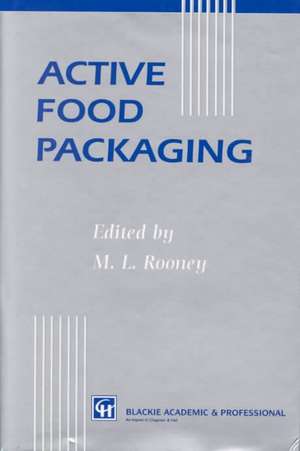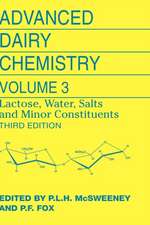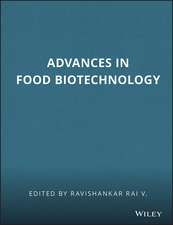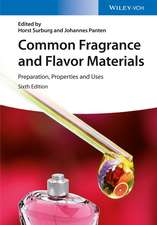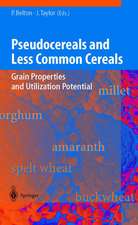Active Food Packaging
Autor M.L. Rooneyen Limba Engleză Hardback – 31 dec 1995
| Toate formatele și edițiile | Preț | Express |
|---|---|---|
| Paperback (1) | 639.41 lei 6-8 săpt. | |
| Springer Us – 25 sep 2012 | 639.41 lei 6-8 săpt. | |
| Hardback (1) | 647.08 lei 6-8 săpt. | |
| Springer Us – 31 dec 1995 | 647.08 lei 6-8 săpt. |
Preț: 647.08 lei
Preț vechi: 761.27 lei
-15% Nou
Puncte Express: 971
Preț estimativ în valută:
123.84€ • 128.81$ • 102.23£
123.84€ • 128.81$ • 102.23£
Carte tipărită la comandă
Livrare economică 14-28 aprilie
Preluare comenzi: 021 569.72.76
Specificații
ISBN-13: 9780751401912
ISBN-10: 0751401919
Pagini: 260
Ilustrații: XI, 260 p.
Dimensiuni: 155 x 235 x 21 mm
Greutate: 0.6 kg
Ediția:1995
Editura: Springer Us
Colecția Springer
Locul publicării:New York, NY, United States
ISBN-10: 0751401919
Pagini: 260
Ilustrații: XI, 260 p.
Dimensiuni: 155 x 235 x 21 mm
Greutate: 0.6 kg
Ediția:1995
Editura: Springer Us
Colecția Springer
Locul publicării:New York, NY, United States
Public țintă
ResearchCuprins
1 Overview of active food packaging.- 1.1 Active, intelligent and modified atmosphere packaging.- 1.2 Origins of active packaging.- 1.3 Literature review.- 1.4 Scope for application of active packaging.- 1.5 Physical and chemical principles applied.- 1.6 Implications for other packaging.- 1.7 Limitations of current approaches.- 1.8 Future potential.- 1.9 Regulatory considerations.- References.- 2 Ethylene-removing packaging.- 2.1 The chemistry of ethylene.- 2.2 Deleterious effects of ethylene.- 2.3 Interactions of ethylene and other gases.- 2.4 Ethylene sources in the environment.- 2.5 Commercial applications in packaging.- Acknowledgements.- References.- 3 Design of modified atmosphere packaging for fresh produce.- 3.1 Introduction.- 3.2 Literature review.- 3.3 Feasibility study.- 3.4 Respiration rates.- 3.5 Measurement of respiration rates.- 3.6 Model equations and package requirements.- 3.7 Polymeric films for MAP applications.- 3.8 Concluding remarks.- Nomenclature.- References.- 4Active packaging in polymer films.- 4.1 Introduction.- 4.2 Oxygen scavenging.- 4.3 Moisture control films.- 4.4 Removal of taints and food constituents.- 4.5 Ingredient release.- 4.6 Permeability modification.- 4.7 Current use commercially.- 4.8 Regulatory and environmental impacts.- References.- 5 Edible films and coatings as active layers.- 5.1 Introduction.- 5.2 Use of edible active layers to control water vapor transfer.- 5.3 Use of edible active layers to control gas exchange.- 5.4 Modification of surface conditions with edible active layers.- 5.5 Conclusion.- Acknowledgements.- References.- 6 Interactive packaging involving sachet technology.- 6.1 Introduction.- 6.2 Oxygen absorbents.- 6.3 Ethanol vapor.- 6.4 Conclusion.- References.- 7 Enzymes as active packaging agents.- 7.1 Enzymes.- 7.2 Potential roles of enzymes in active packaging.- 7.3 History.- 7.4 Oxygen removal.- 7.5 Antimicrobial effects.- 7.6 Time—temperature integrator—indicators.- 7.7 Lactose removal.- 7.8 Cholesterol removal.- References.- 8 The history of oxygen scavenger bottle closures.- 8.1 Background.- 8.2 Oxygen measurements.- 8.3 Oxygen scavenger liners.- 8.4 The effect of scavenging closures on beer flavor.- 8.5 The advantages of oxygen control bottles.- 8.6 The future of oxygen scavenging closures.- References.- 9 Commercial applications in North America.- 9.1 Packaging overview.- 9.2 Marketplace susceptors.- 9.3 Application of temperature indicator to microwaveable packaging.- 9.4 Active packaging — produce.- 9.5 Oxygen absorber food applications.- 9.6 Other applications.- References.- 10 Time—temperature indicators.- 10.1 Introduction.- 10.2 Indicator systems.- 10.3 Indicator application issues and consumer interests.- 10.4 Chemical indicators for thermal process validation.- 10.5 Conclusions.- References.- 11 Safety considerations in active packaging.- 11.1 Introduction.- 11.2 Packaging and food safety.- 11.3 Passive safety interactions.- 11.4 Active safety interactions.- 11.5 Conclusions.- References.
